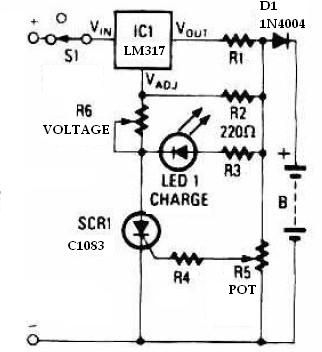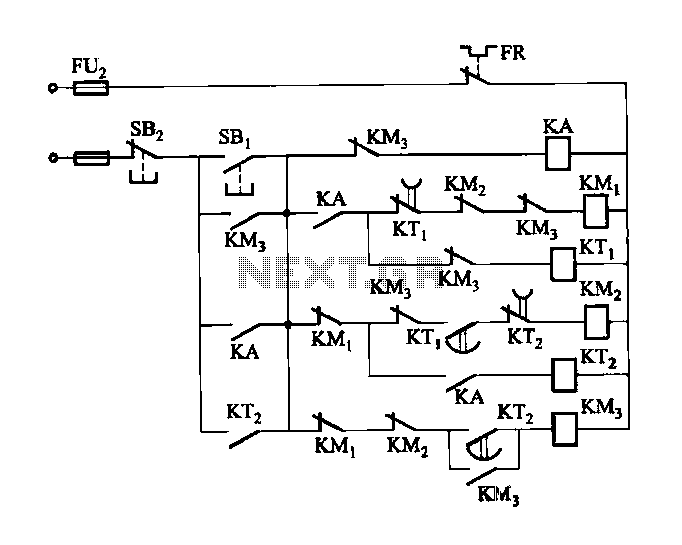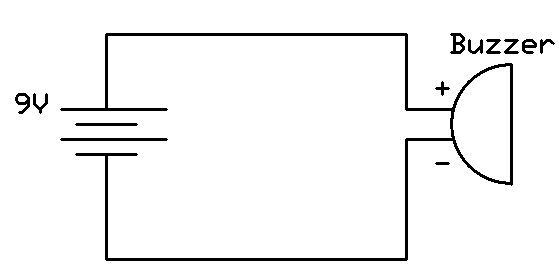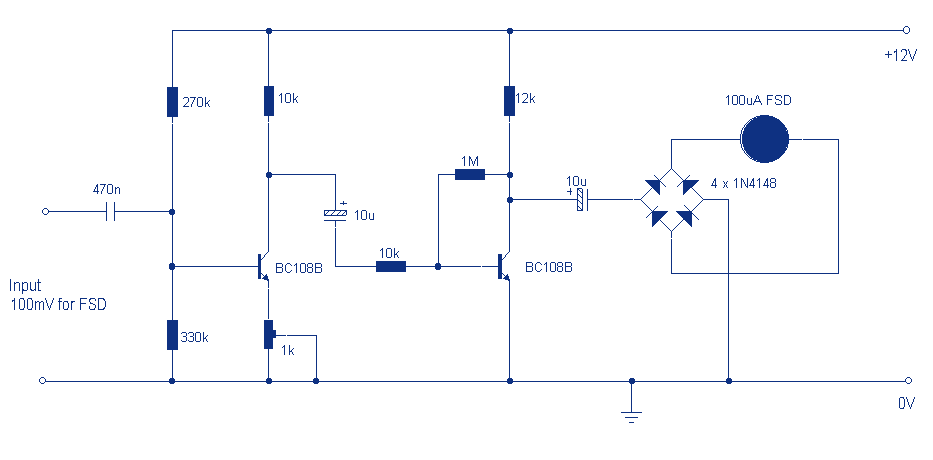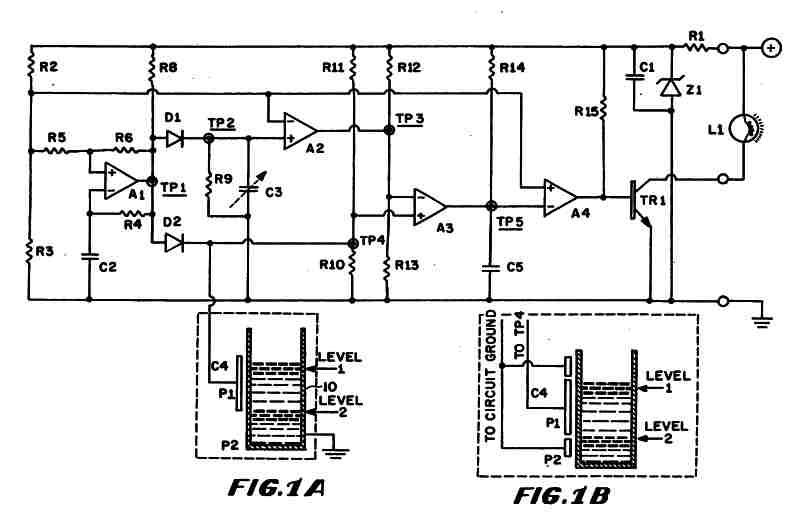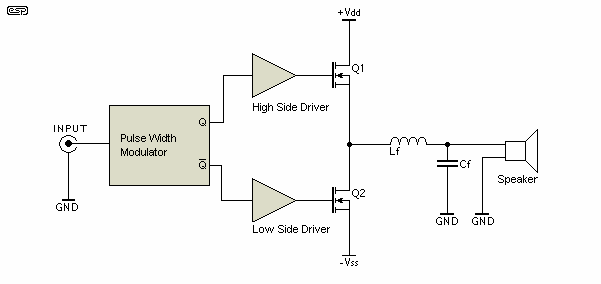
meter circuit
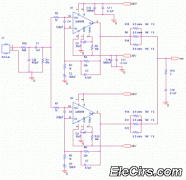
AC level meters, such as VU meters, and DC level meters, such as signal meters, are used for measuring electrical signal levels. These devices feature a display consisting of nine red or green LEDs that represent the input level in a bar format. The input amplifier is designed to handle a wide range of signal levels.
AC and DC level meters serve essential roles in audio and signal processing applications by providing visual feedback on signal strength. The VU (Volume Unit) meter is particularly significant in audio engineering, as it helps in monitoring audio levels to prevent distortion and ensure optimal sound quality. The DC signal meter, on the other hand, is utilized in various electronic applications to gauge the strength of direct current signals.
The display of these meters is constructed using nine LEDs, which illuminate in red or green, depending on the input signal's level. This bar graph representation allows for quick visual assessment of the signal strength, with each LED corresponding to a specific range of input levels. The use of color coding enhances usability, as users can instantly identify whether the signal is within an acceptable range (green) or approaching critical levels (red).
The input amplifier is a crucial component of these meters, designed to accommodate a broad spectrum of input signals. It amplifies the incoming signal to a level suitable for accurate measurement and display. This wide bandwidth capability ensures that the meter can be used in various applications, from low-level audio signals to higher voltage levels in industrial settings.
In summary, AC and DC level meters are vital tools in both professional audio environments and general electronics. Their LED displays provide clear visual feedback, while the input amplifiers ensure versatility across different signal types and levels, making them indispensable for effective signal monitoring and management.AC level meters such as VU meters. . DC level meters such as signal meters. Functions. Display Nine red or green LEDs display the input level in the shape of a bar. . Input amplifier Wide. 🔗 External reference
AC and DC level meters serve essential roles in audio and signal processing applications by providing visual feedback on signal strength. The VU (Volume Unit) meter is particularly significant in audio engineering, as it helps in monitoring audio levels to prevent distortion and ensure optimal sound quality. The DC signal meter, on the other hand, is utilized in various electronic applications to gauge the strength of direct current signals.
The display of these meters is constructed using nine LEDs, which illuminate in red or green, depending on the input signal's level. This bar graph representation allows for quick visual assessment of the signal strength, with each LED corresponding to a specific range of input levels. The use of color coding enhances usability, as users can instantly identify whether the signal is within an acceptable range (green) or approaching critical levels (red).
The input amplifier is a crucial component of these meters, designed to accommodate a broad spectrum of input signals. It amplifies the incoming signal to a level suitable for accurate measurement and display. This wide bandwidth capability ensures that the meter can be used in various applications, from low-level audio signals to higher voltage levels in industrial settings.
In summary, AC and DC level meters are vital tools in both professional audio environments and general electronics. Their LED displays provide clear visual feedback, while the input amplifiers ensure versatility across different signal types and levels, making them indispensable for effective signal monitoring and management.AC level meters such as VU meters. . DC level meters such as signal meters. Functions. Display Nine red or green LEDs display the input level in the shape of a bar. . Input amplifier Wide. 🔗 External reference
